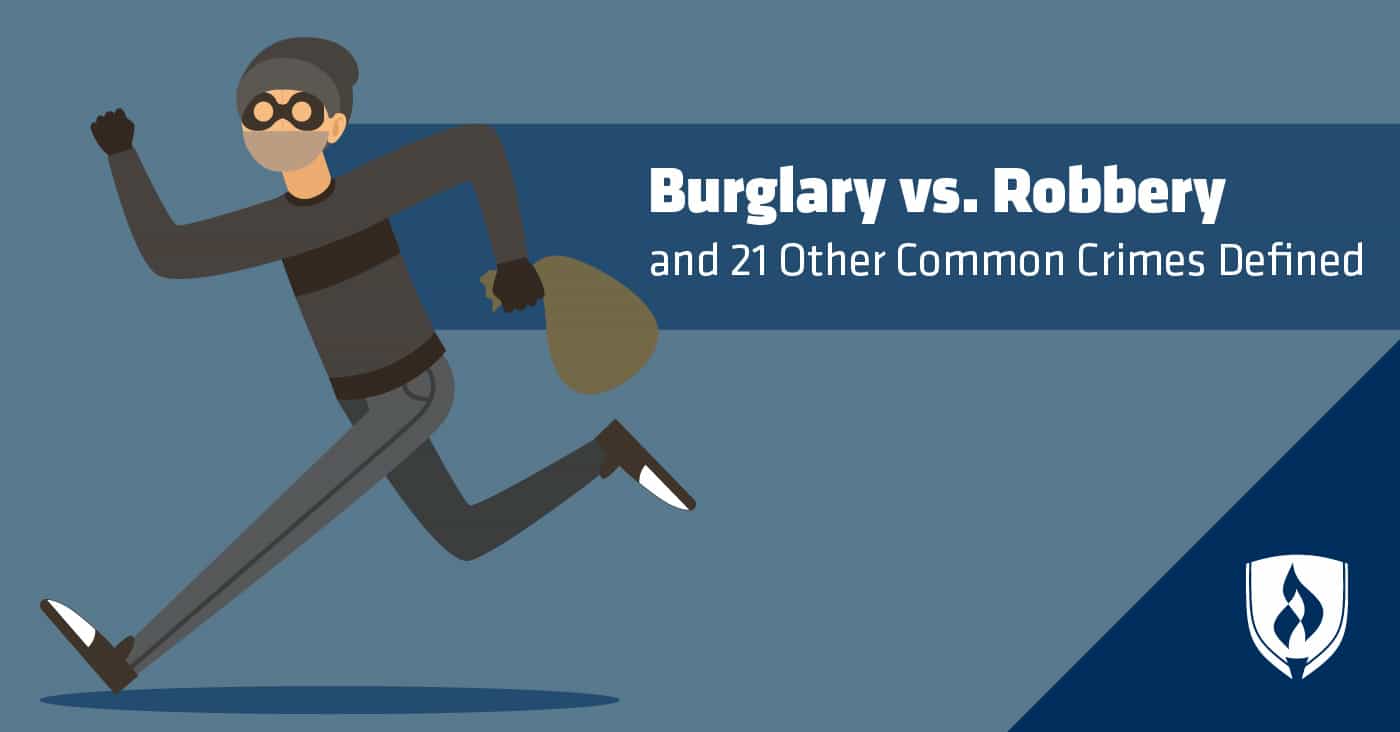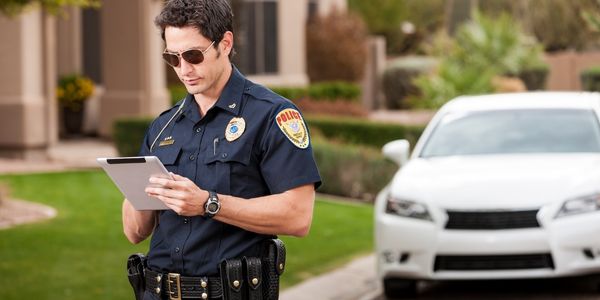You do your best to keep an eye on local crime reports, but sometimes following the news leaves you wondering what wrongdoers actually did wrong and how that compares with similar charges. The latest conundrum that’s left you stumped is burglary versus robbery. What’s the difference, anyway? And what on earth does misdemeanor mean?

These criminal justice terms can be confusing at first glance. Words like burglary and robbery refer to similar crimes that are only distinguished by small but important differences.
To help get to the bottom of the difference between burglary versus robbery and the definitions of other common crimes, we’ve compiled information from the Bureau of Justice Statistics and other reputable resources.
While the specific legal definitions of these crimes may vary somewhat depending on how local statutes are written, these definitions should give you a better understanding of how these crimes are typically defined. That being said, this article should not be relied upon for legal advice—contact an attorney if you are in need of legal services.
Burglary vs. robbery
With that out of the way, let’s start with the big one—making the distinction between burglary and robbery. Burglary and robbery are easy to confuse because often they both include elements of theft (also called larceny). Theft is when someone takes property that doesn’t belong to them without the owner’s permission.
Robbery occurs when someone takes something from another person through the use of force or threats. The key here is that robbery includes person-to-person interaction, while theft can occur without in-person confrontation. Examples of robberies include taking money from someone who stopped at an ATM or threatening a store clerk so they give up money from a cash register.
Burglary, on the other hand, is when someone enters a building or property that doesn’t belong to them with the intent to commit a crime, whether theft or something else. Entering a building or property doesn’t have to be done through force—walking through an open door onto private property can still apply. A suspect doesn’t have to actually steal anything to be charged with burglary. For example, breaking into a neighbor’s shed hoping to steal equipment but leaving with nothing doesn’t give the accused a free pass for breaking in.
21 Other common crime definitions
We know burglary versus robbery aren’t the only criminal justice terms that can be confusing to keep straight. This list will put you in the know about the meaning behind the most common crime terms.
Arson
Arson is when someone purposefully sets fire to a property in order to damage or destroy it. There are differing degrees of arson depending on whether or not the property was occupied at the time of the fire. While not common, some accidental fires caused by gross negligence can be charged as arson as well.
Assault
Assault is when someone uses words and actions to threaten to physically harm another person. For example, someone runs toward another person while shouting threats of physical violence, or someone tries to punch another person but misses. Assault is often seen in combination with battery. Most criminal statutes require a physical element to be charged with assault. For example, yelling, “I’m going to kill you!” in the heat of the moment without following through is unlikely to lead to prosecution, but throwing a punch with it could.
Aggravated assault
Aggravated assault typically indicates a more serious level of harm that could occur if the assaulter follows through with physical violence. Examples of aggravated assault include assault with a weapon and sexual assault with intent to rape.
Battery
Battery is any unlawful physical contact, such as violence or unwanted sexual contact.
Bribery
Bribery is offering or accepting money, or anything else of value, to gain privilege or influence over an elected official or other public officer.
Counterfeiting
This is a type of fraud that involves creating false currency or goods for financial gain.
Criminal threats
These are threats spoken aloud with the intent to incite fear in another person or group of people, or to disrupt a public event. Some jurisdictions might also call these terroristic threats, depending on the context of the threat. Those charged with this crime have typically met a high bar of conditions that lead the threatened to believe they were in a specific and imminently dangerous situation.
Embezzlement
This is a specific type of theft in which a person has been given permission to handle an asset (typically money) but not to take it for themselves. Examples of embezzlement include employees who use accounting tricks to steal from their employer or someone using a relative’s Social Security money for themselves.
Disorderly conduct
This is unruly behavior that disturbs the peace or could lead to violence. Disorderly conduct is particularly common among large groups of people who are intoxicated, such as during or after music or sporting events.
Felony
A felony describes a more serious level of crime that generally results in stronger sentencing. Examples of felonies include rape, murder and aggravated assault.
Forgery
Forgery is the crime of falsifying a signature or document, such as passports or other identification. Artwork can also be forged.
Fraud
Criminal fraud is the deception of others for personal gain. There are many types of fraud, such as identity theft and insurance fraud, but fraud can also occur in more ordinary circumstances, such as selling a piece of equipment without disclosing that it doesn’t work properly.
Harassment
Harassment is unwanted behavior that annoys, intimidates or threatens others. There are also subtypes of harassment, such as sexual harassment, workplace harassment and cyberstalking. Not all may rise to the level of a crime.
Homicide
Homicide is the killing of another person under any circumstance, including justified killing as in self-defense or soldiers fighting in a war.
Identity theft
This type of fraud occurs when someone uses your personal information without your permission to make unauthorized purchases, open credit cards in your name, obtain a loan or even take over your existing bank accounts.
Infraction
This is the lowest level of crime that is typically punished with fines but no prison sentence. Traffic violations like speeding are the most common type of infraction.
Larceny
Larceny is theft without in-person confrontation or violence.
Manslaughter
Manslaughter is the unplanned or unintentional killing of another person. Voluntary manslaughter includes situations of extreme emotional provocation, such as in “crimes of passion.” Involuntary manslaughter is when someone unintentionally kills another through recklessness or negligence, such as running a red light and causing a fatal accident.
Misdemeanor
Misdemeanors are a lower level of crime than a felony but higher than an infraction. Misdemeanors are punishable by incarceration for one year or less. Examples of misdemeanors include trespassing, vandalism, assault and disorderly conduct.
Murder
Murder is the unjustified killing of another person. Murder is usually broken into degrees. First-degree murder includes killings that were planned (or premeditated) in any way. Second-degree murders are typically unplanned but still with intent to kill.
White-collar crimes
This term refers to nonviolent crimes that typically have the goal of unlawfully obtaining money. White-collar crimes include embezzlement, some types of fraud, identity theft and forgery.
Discover more about criminal justice
You’re all caught up on the finer points of burglary versus robbery and have a better handle on several types of common crimes. You obviously have an interest in the world of investigations—but have you ever considered making it a career?
Take a closer look at the traits needed to succeed in the field in our article, “Investigate Your Future: Are You Destined for a Crime-Solving Career?”
Related Articles:




